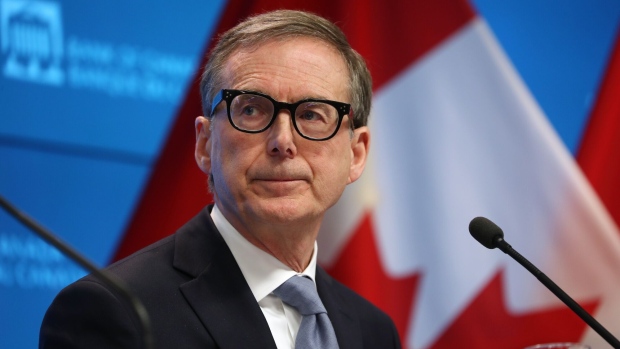
The recent decision by the Bank of Canada regarding interest rates didn't involve any cuts, but it did shed light on the bank's outlook on where interest rates might be headed.
While maintaining the overnight interest rate at 5%, the Bank of Canada made a notable adjustment: it increased its nominal neutral interest rate.
The neutral rate represents the point at which the central bank's monetary policy neither stimulates nor restrains the economy.
This rate essentially functions as the “Goldilocks” interest rate, as described by Sheila Block, an economist and research associate at the Canadian Centre for Policy Alternatives. It's the rate at which the economy can continue growing without sparking excessive inflation.
The newly estimated neutral rate falls within the range of 2.25% to 3.25%, up from the previous range of 2% to 3% as per the central bank's last report.
Although the neutral rate is not an exact science and is presented as a range, it serves as a crucial reference for the central bank's monetary policy decisions, particularly for Canadian consumers, especially those with debt obligations.
According to Block, “central banks are striving to find the optimal point where their rate adjustments neither trigger a recession nor fuel inflation.”
The increase in the neutral rate suggests that the Bank of Canada anticipates interest rates settling at a higher level post-cutting than previously anticipated. However, it does not provide insights into the timing or pace of such cuts.
Block emphasizes that the neutral rate indicates the lower limit to which the bank believes rates can decline. This adjustment signifies the bank's opinion that rates cannot reach the levels previously expected.
Bank of Canada Governor Tiff Macklem stated during a press conference that the neutral interest rate has minimal impact on the bank's real-time deliberations. It serves as an essential factor in their models but doesn't significantly influence immediate monetary policy decisions.
Macklem explained, “The neutral rate represents where our policy rate would stabilize in the long run, under conditions where inflation meets the target, the output gap is closed, and there are no unexpected shocks.”
Block notes that Canadians became accustomed to low interest rates before the onset of the covid-19 pandemic. However, any hopes of returning to pre-pandemic rate levels have long vanished.
The long-term economic landscape is evolving due to various factors, such as escalating government debt and the investment demands stemming from climate change. These factors necessitate a higher neutral interest rate.
Despite the uptick in the neutral rate, the Bank of Canada's projection remains relatively optimistic. However, many market analysts anticipate a higher rate, given the accelerating inflationary factors.
Avery Shenfeld and Ali Jaffery at CIBC predicted an increase in the neutral rate by the Bank of Canada and anticipate a similar move by the U.S. federal reserve in the future.
However, forecasting the precise neutral rate several years ahead is challenging, and it becomes clearer only as the economy approaches it.
Shenfeld and Jaffery also noted that historically, Canada's neutral rate has been lower than that of the U.S. due to Canadians holding more debt on average.
In summary, the Bank of Canada's decision to raise the neutral rate reflects its anticipation of interest rates settling at a higher level in the future, influenced by evolving economic conditions and inflationary pressures.